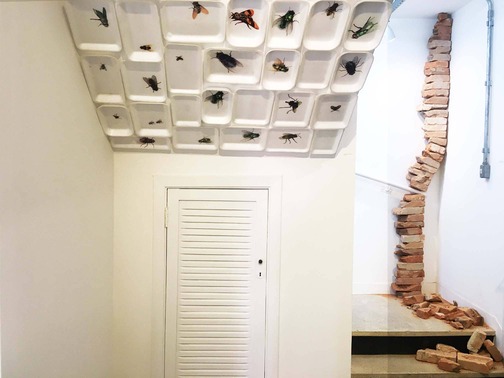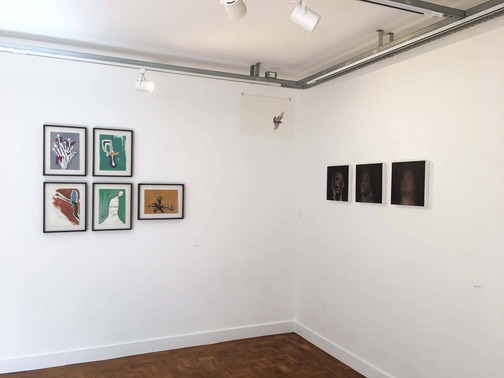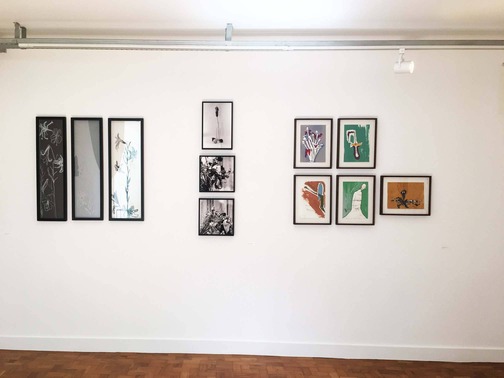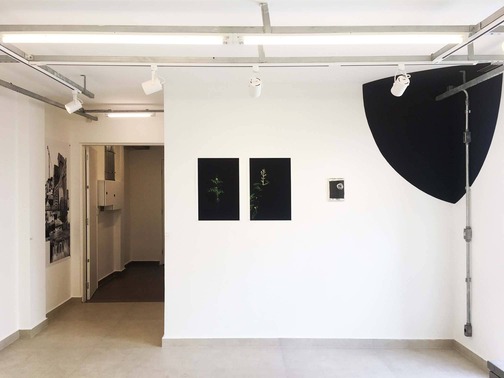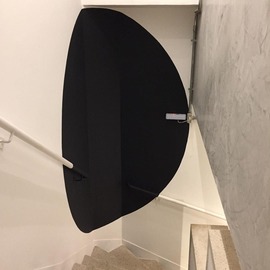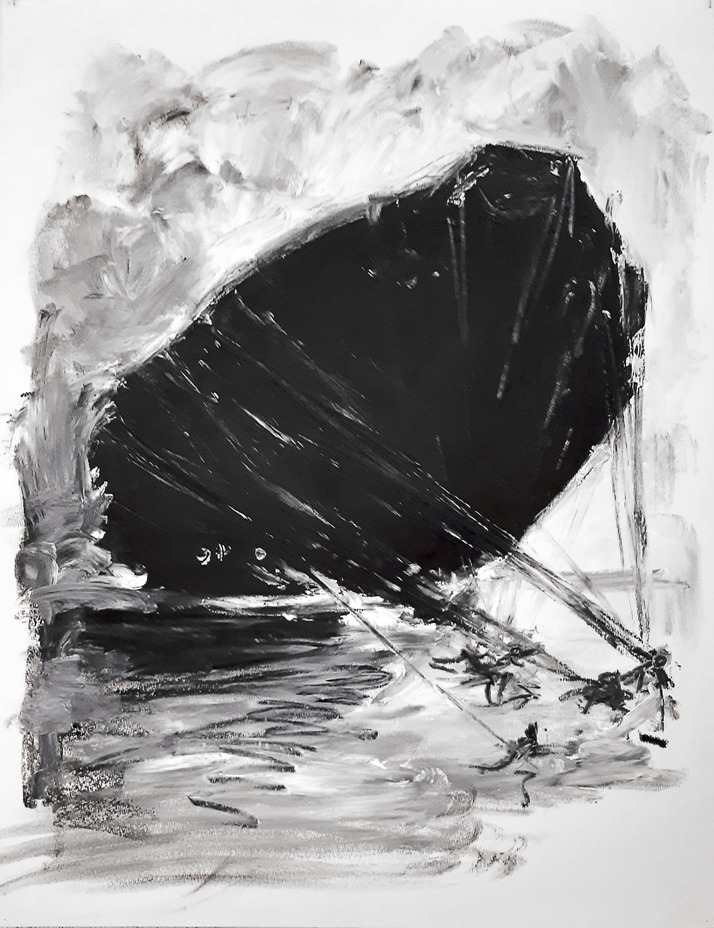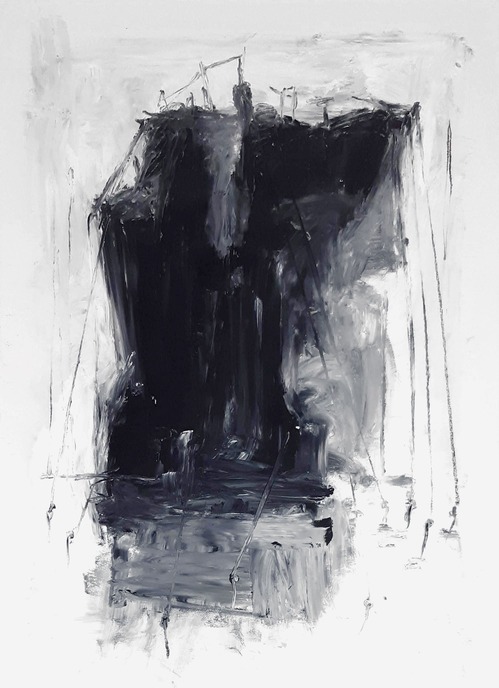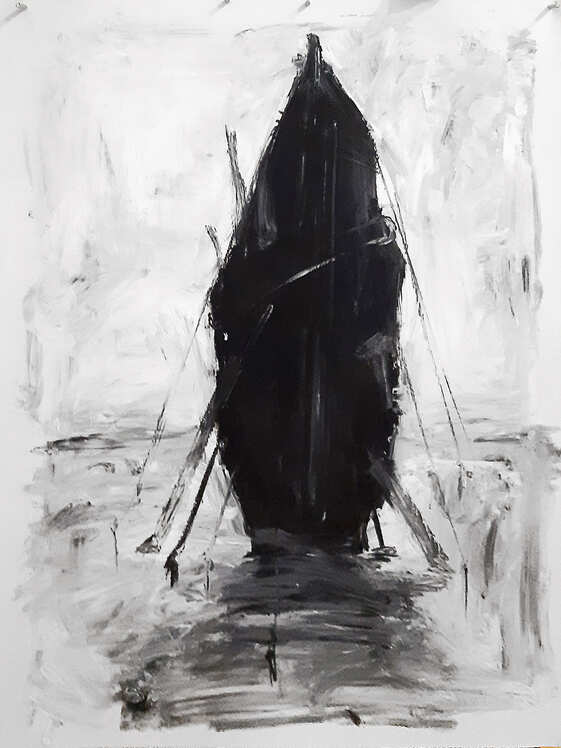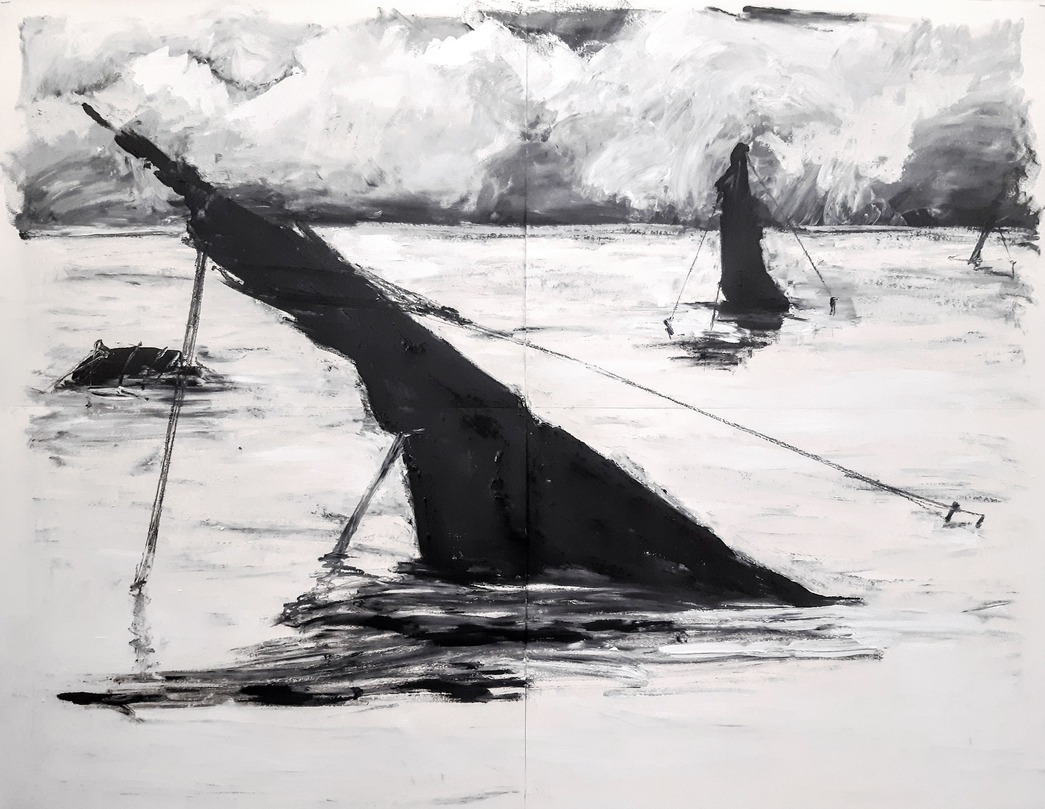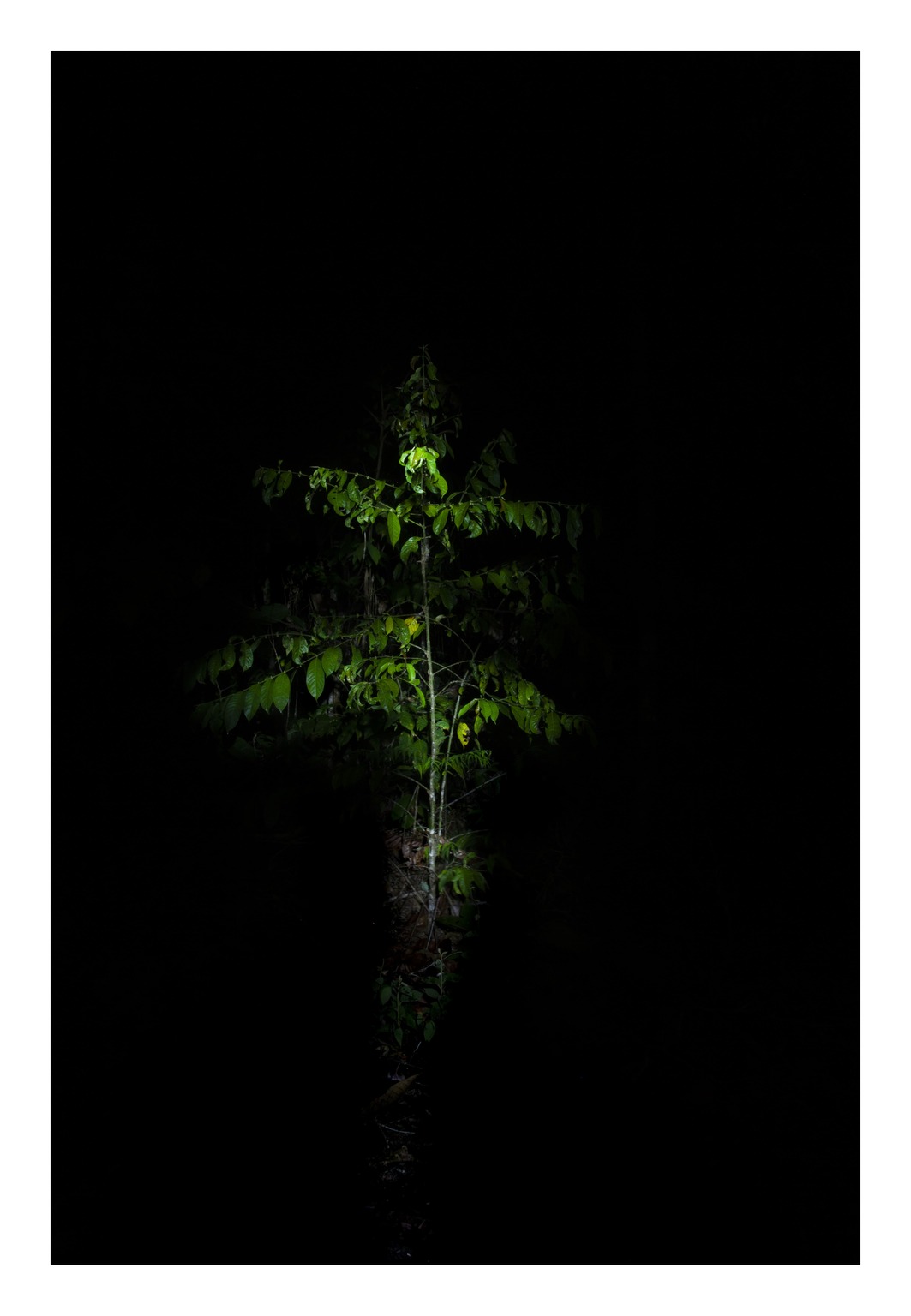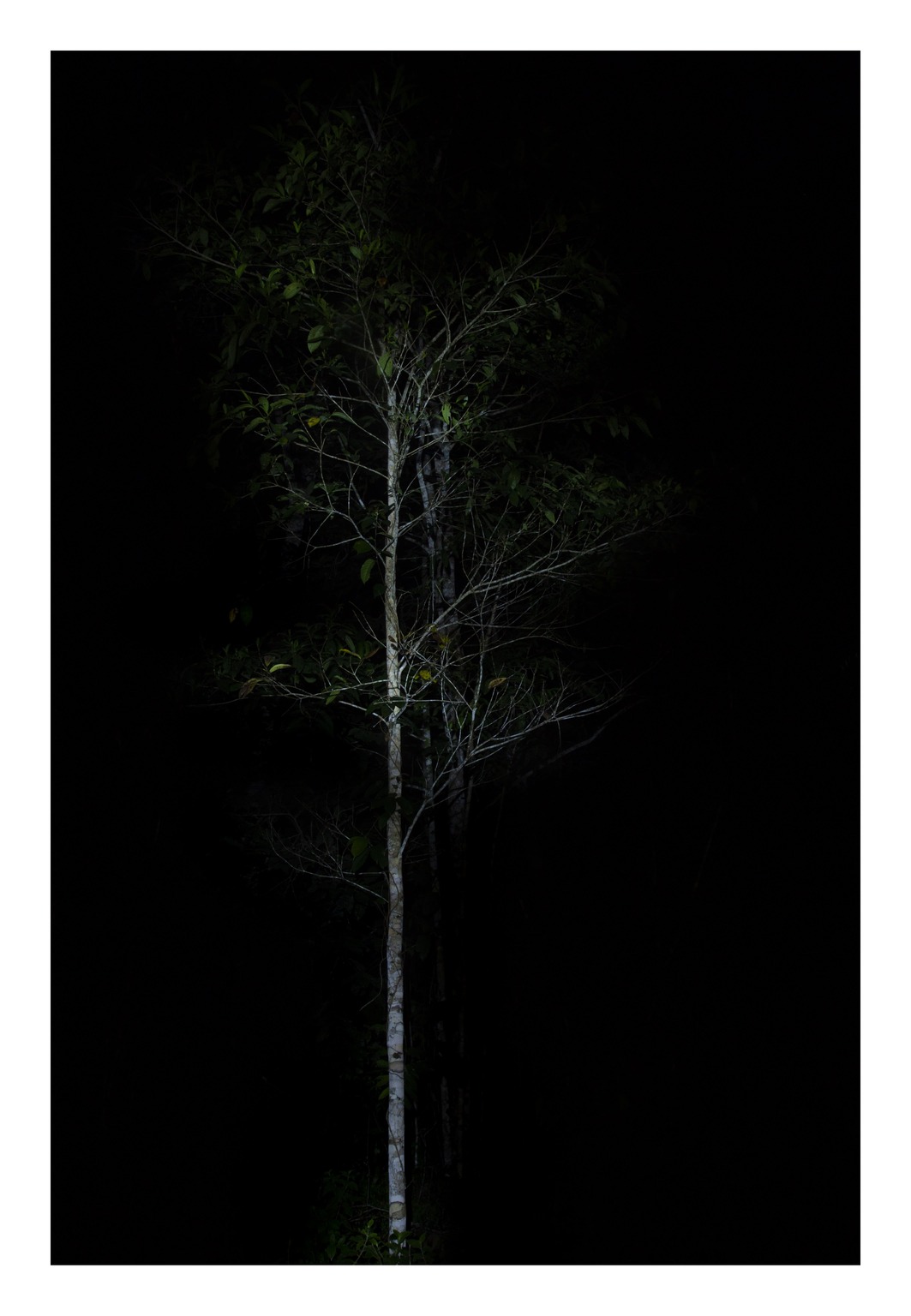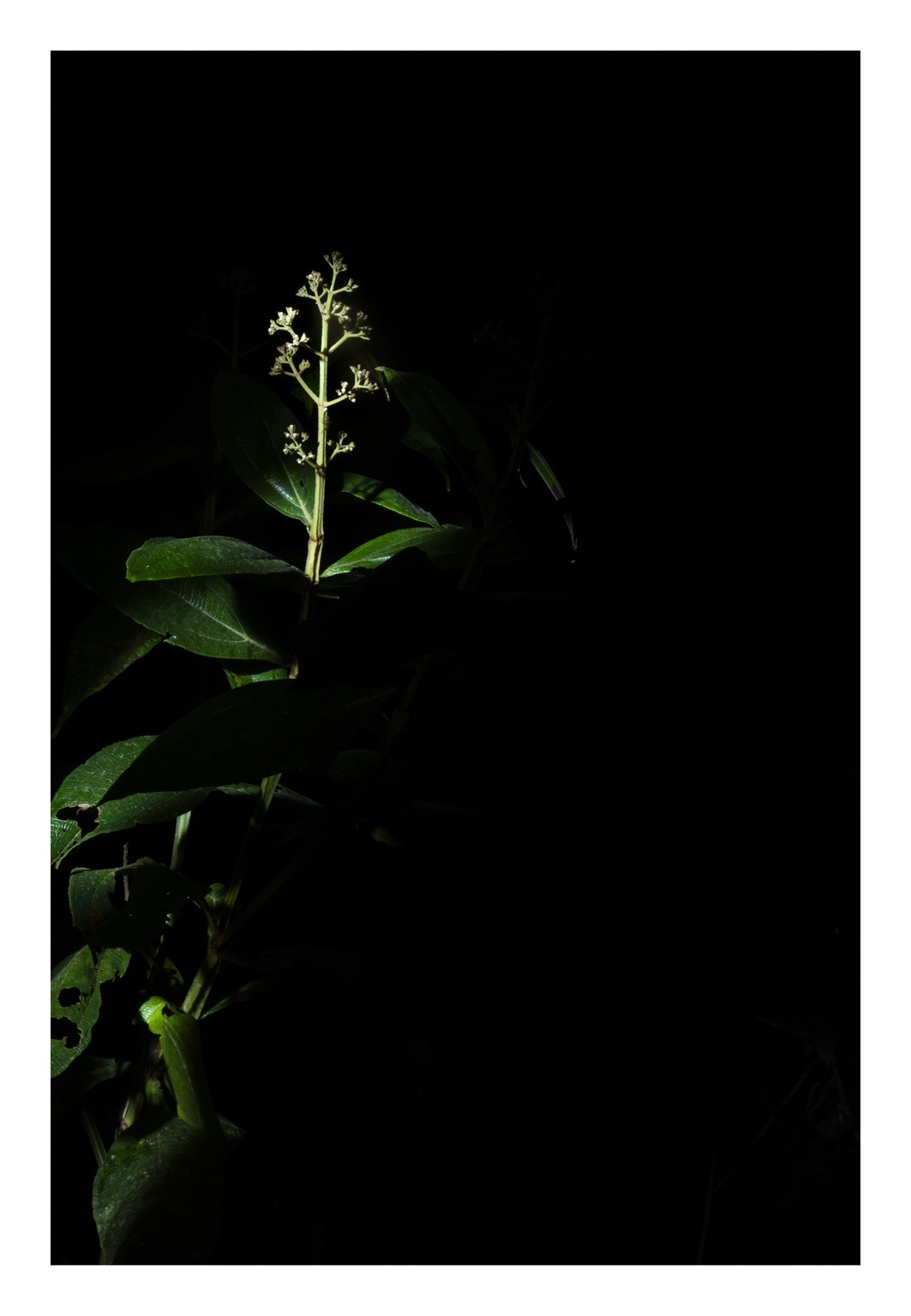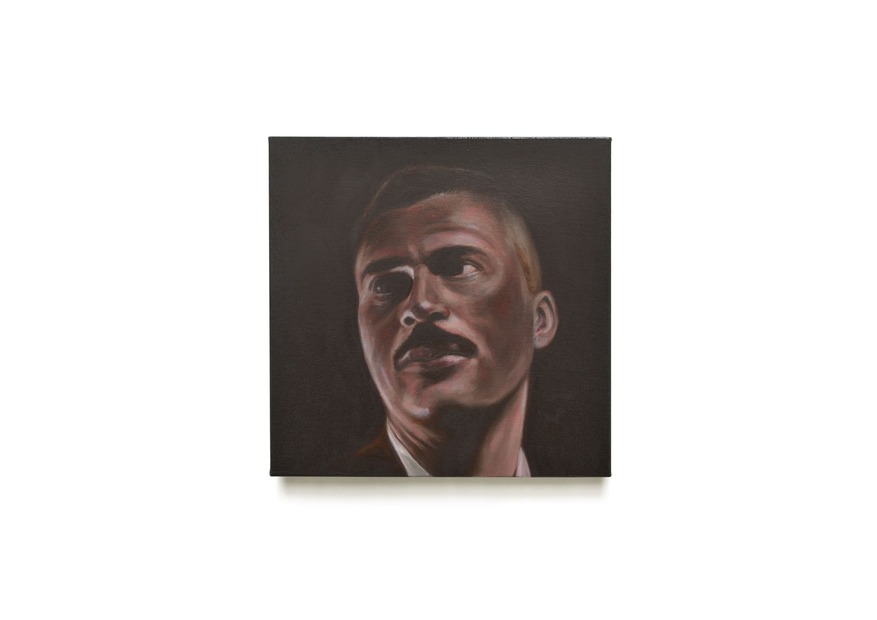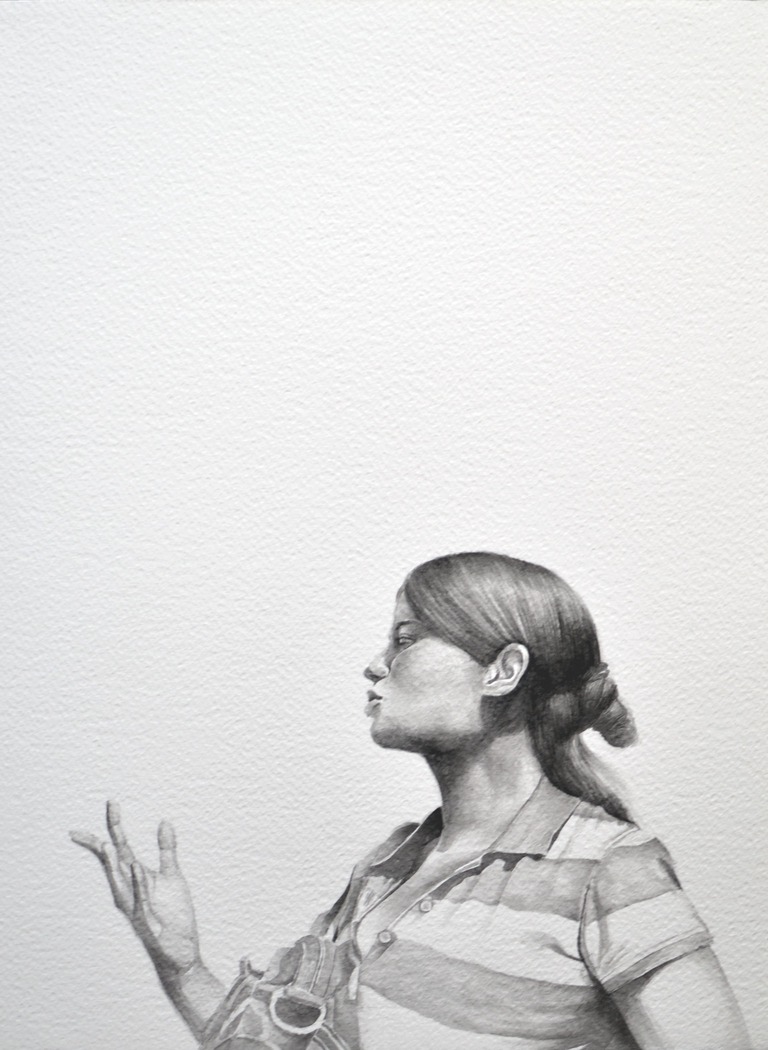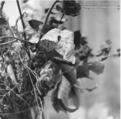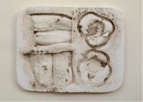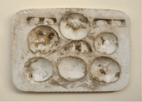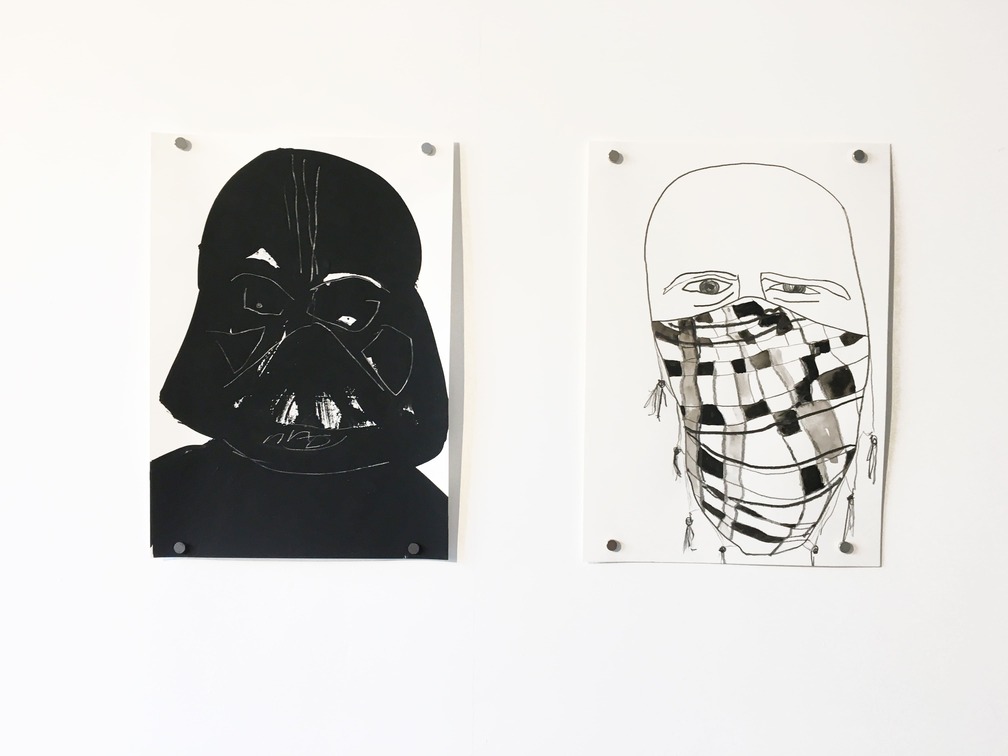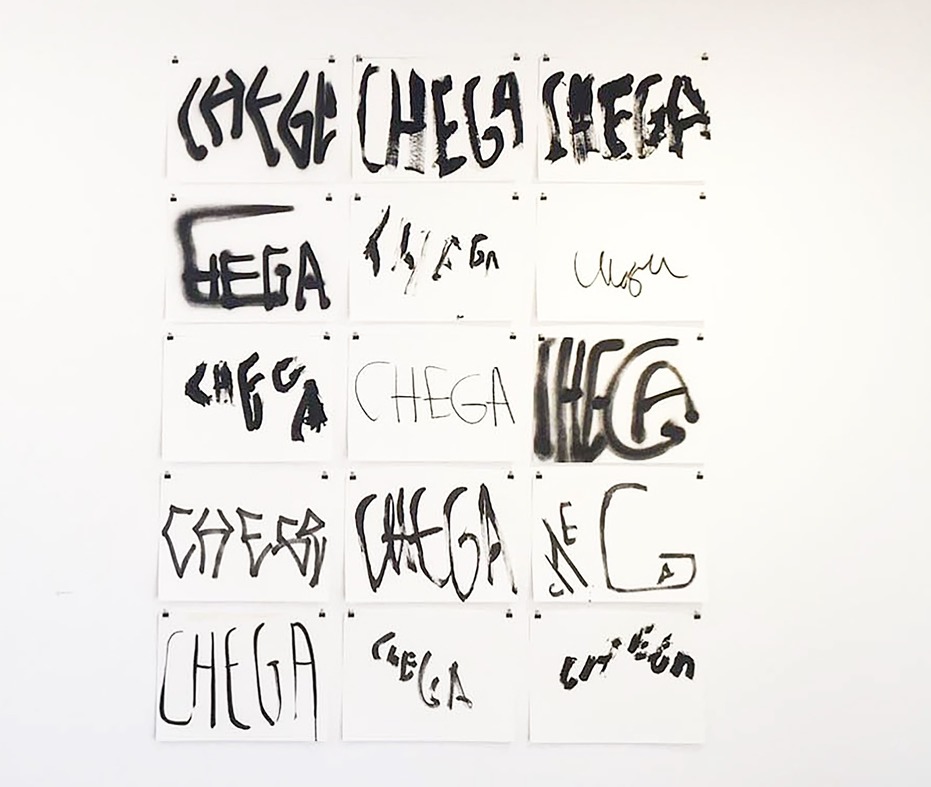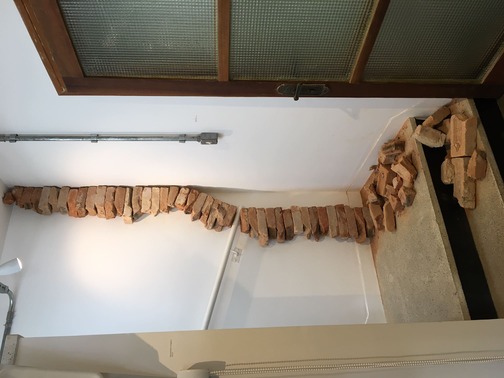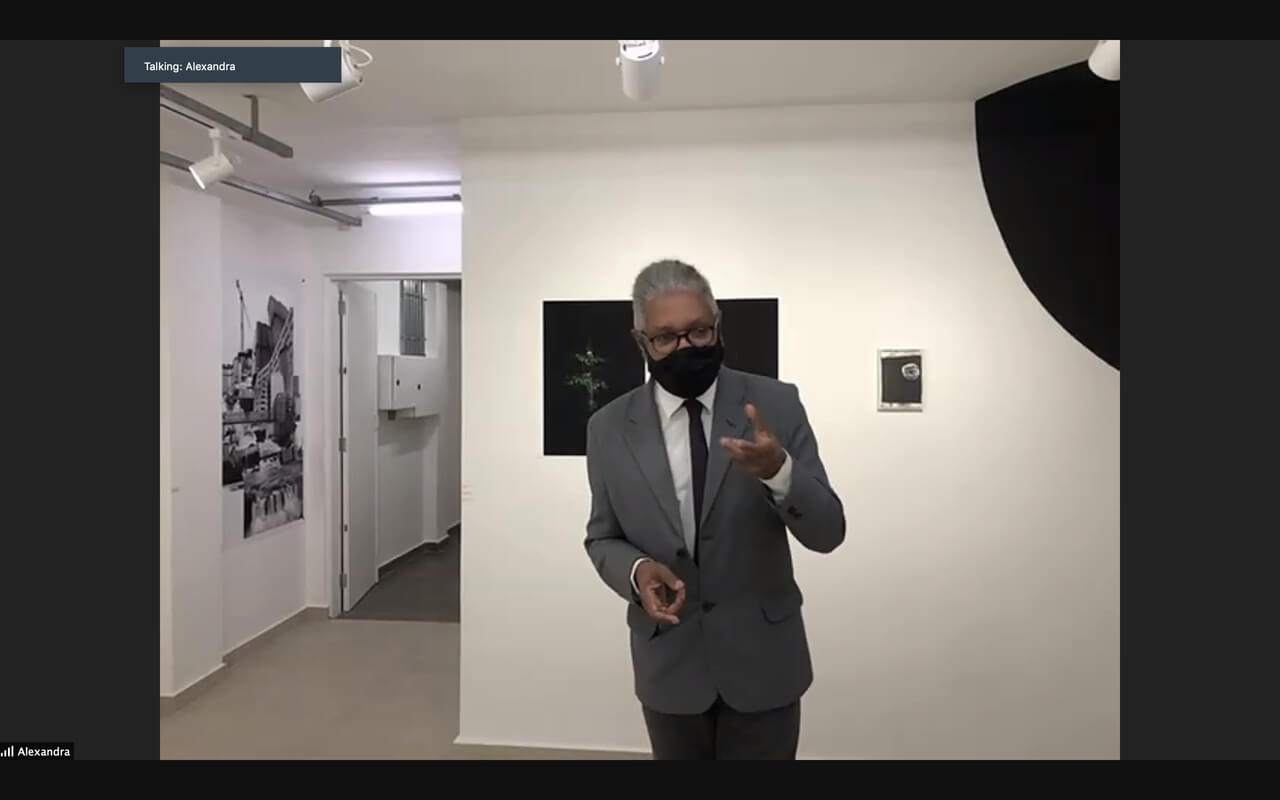
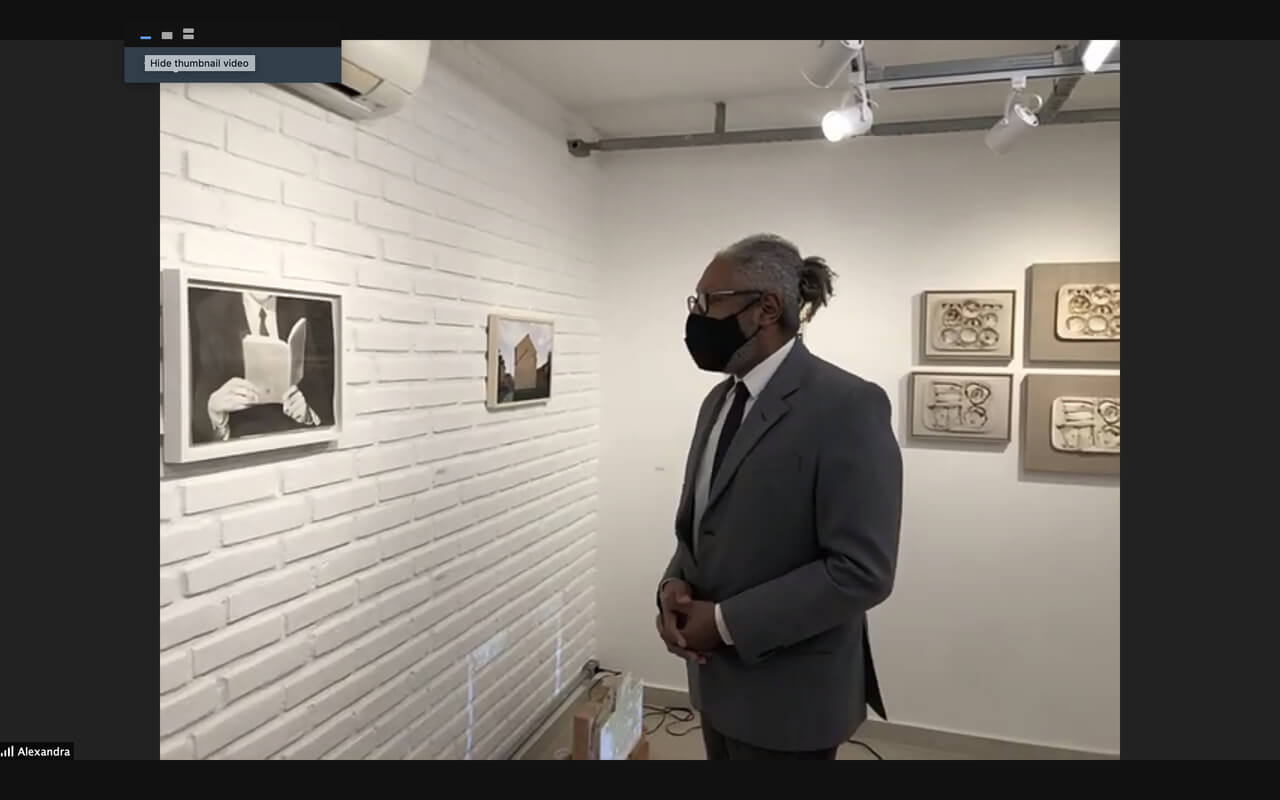

Memento Mori
Alexandra Ungern, Carolina Caliento, Claudia Tavares, Christiana Moraes, Heloisa Lodder, Iara Freiberg e Nilson Sato
Curatorship
Claudinei Roberto da Silva
Opening: online 04/23/2021 | in person 04/24/2021
Exhibition period: from 04/24 to 07/04/2021
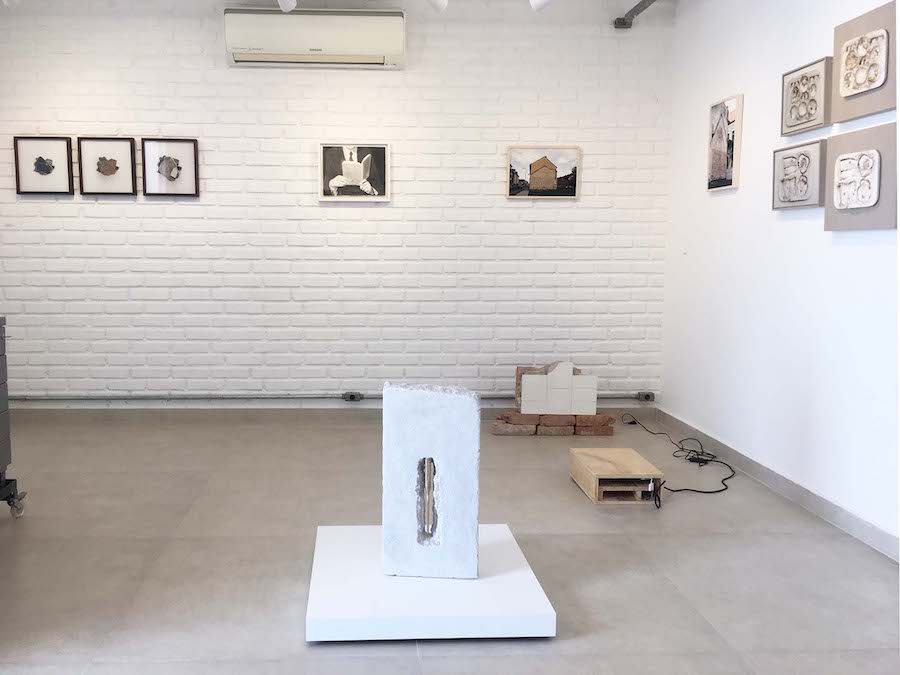
“All things are difficult; man cannot explain them with words. The eye is not satisfied with seeing, nor the ear filled with hearing.” Ecclesiastes.
There is among us, a malaise evidenced by the relentless spread of a lethal virus, whose victims and their families we pay reverence. An indisputable sign of the decadence and perhaps the agony of a civilization that still intends to be hegemonic. The violence of this civilization against bodies that differ from its supposed superiority intensifies. Necropolitics thus guides the ideological agendas of those who, undermining democracy, are installed in their palaces. The irresponsible, unscrupulous management of the planet’s finite natural resources is in full swing and, as a consequence, the very existence of the human species is placed on the horizon of possibilities. The “humanist skepticism” of some artists foresaw and elaborated in their works the situation we are experiencing. They foresaw our inability to help that considerable portion of humanity made miserable by the greedy logic of some. They predicted the inability to communicate with each other, the incompetence in the care and management of affections. Everything was in the minds of these artists who, through their poetics, constructed narratives that suggest salvation through silence, which does not translate into passive contemplation of beauty, but on the contrary, impels us to action. An action that begins with the revolution of the subject, who, confronted with the work, is in front of a mirror and the image reflected in it is what demands answers to the questions that the work poses. Thus we have the works of Alexandra Ungern, Carolina Caliento, Claudia Tavares, Christiana Moraes, Heloisa Lodder, Iara Freiberg and Nilson Sato that, articulated by the exhibition, create a powerful narrative that not only announces a state of affairs already denounced here, but does so in way to highlight different aesthetic strategies and choices.
Alexandra Ungern, for example, chronicles the ephemeral in still lifes that she “freezes” in photographs and objects that have a dubious nature, since they are also installed as objects that measure the unstoppable passing of time. In line with this sensibility is the work of Heloisa Lodder, an artist who investigates reality through an archeology of architectural structures captured also from her trained designer sensibility. Now, this sensitivity does not prevent her from a certain “rusticity” in dealing with the matter she analyzes. Lodder exposes the matter in order to highlight its processes that carry something performative and ephemeral. By the way, the essential drawing by Christiana Moraes is also performative. Drawing that crosses all the artist’s thoughts and actions. Relentlessly expressionist drawing that discusses dysfunctionalities and not rare aberrations and monstrosities that, in the end, are realistic portraits of a painful moment of our suffering humanity. The interest she shows in the genre of still life, which she, as well as Ungern, update by exercising it is interesting.
Carolina Caliento builds a dystopian universe where the landscapes announce a tragedy. There is something grand and operatic about her work that heralds Armageddon. An apocalypse of devastation and loneliness that nevertheless seduces and captivates us. The artist articulates her poetics based on the photography she manipulates, painting and drawing. They are powerful images, chronicles of foretold tragedies that are organized into works of varying dimensions, but the sense or evocation of monumentality is almost always present. It is interesting to observe how this idea of the monumental is also exercised in the instigating work of Iara Freiberg. The interventions that the artist performs in the urban environment, in architectures that she reveals at the same time that she questions them. Freiberg intervenes with incisiveness and intelligence in spaces that from then on gain other interests and even dimensions. A perhaps careless look could suggest that what her work seeks to achieve are optical illusions, achieved, moreover, at the cost of sophisticated calculations. But if this is true, it is also true that through these “games”, what is highlighted are the potentialities of the space that the artist investigates. There is a sense of wonder in front of her propositions, even if in the present case, more disturbing and sometimes frightening than appeasing our senses. Soothing the senses is not on the agenda of this cast of artists, even if this suggestion can be seen in the work of virtuoso Nilson Sato. It should be noted that his virtuosity as a painter and draftsman exists in favor of a poetic project, never ceasing to be subaltern to this project. Sato is a laconic man, attentive to the essential and this predicate is also present in his work where unfilled spaces organize composition of enormous poetic density. It is characteristic of the works present in the exhibition, a political charge that is not presented in an obvious way. However o, the portraits of Marielle Franco and Carlos Marighela that the artist presents could contest the statement. However, it is worth considering the unrealized utopias expressed by the trajectory of these two militants and considering putting them in perspective with the other narratives expressed in the works of other artists. The exhibition, by placing the works in relation to each other, manages to construct a narrative that is intended to be more complex than that which emerges from an individual work. This is how utopias and dystopias intersect to remind us that we are going to die and that’s why we have to seize the day. This also seems to suggest the artist Claudia Tavares, whose powerful work is composed of investigations of various media, notably photography, which she articulates in order to stretch the limits of language itself. Tavares devotes special attention to the environment. Ecology derives from this some subtly blunt proposals, as in the magnificently realized photographs in which the image of vegetation emerges with difficulty from a background of absolute and velvety blackness. His series of painstakingly realized drawings also bring this ambiguity of the delicate and the “heavy”, a duality that makes the poetics more complex and that does not cloud its meaning.
Memento mori is the inaugural exhibition at the new space at Alê Espaço de Arte. Project led by artist Alexandra Ungern who has been playing an important role in the city of São Paulo. Judging by the commitment of the administrators of the space during the years of work already computed, we can deduce that this fundamental work of promoting contemporary art and education that Ateliê Alê develops, should guarantee new and important contributions to the universe of culture in the city and in the country.
Claudinei Roberto da Silva
Curator
